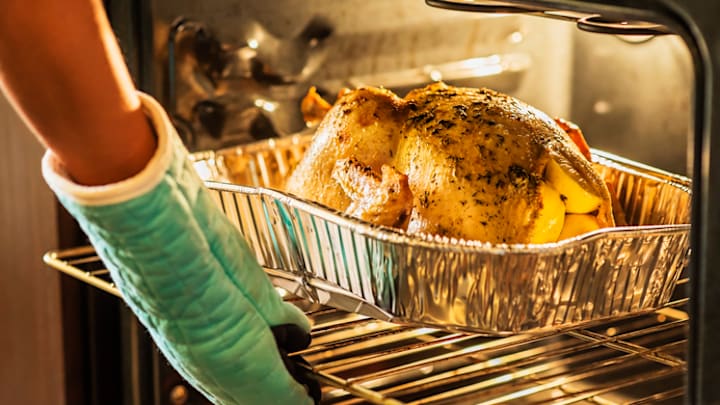Whether you’re making mouthwatering blueberry muffins from scratch or finally giving in to that partially opened box of fish sticks that’s been hiding in the back of your freezer for eight months, there’s a fairly good chance that you’ll be heating your oven to 350ºF. How can such vastly different foods require the same cooking temperature?
It’s all thanks to something called the Maillard Reaction. In 1912, chemist Louis Camille Maillard was the first to describe the magical transformation that happens to food when it’s cooked at around 300°F to 350ºF. The finer details of the process are still not totally understood, but it’s generally agreed that the Maillard Reaction happens when heat transforms the proteins and sugars in food, creating a release of new flavors, aromas, and colors. On an evolutionary level, these delicious changes signal to humans that the food won’t harm us and may also contain vital nutrients.
However, that doesn’t mean that we should cook everything at 350ºF. That’s just the baseline. For example, most breads need higher temperatures to rise quickly, and puff pastries do better in the 400ºF range because the steam released at that temperature helps the dough expand. When cooking a Thanksgiving turkey, the recipe may call for first roasting at a high temperature to acquire a crispy texture, then lowering the heat to 325° or 350° to fully cook the meat. But for many recipes, 350ºF is the golden rule.
You should thank your lucky stars for modern oven temperature dials and meat thermometers, which are way better for gauging the oven’s temp than the old method of just sticking your arm inside it. Before temperature technology existed, Slate writes, bakers would hold an arm inside the oven to see if they could stand it for more than 30 seconds. If they could, it wasn’t hot enough yet.
Have you got a Big Question you'd like us to answer? If so, let us know by emailing us at bigquestions@mentalfloss.com.
Discover More Fascinating Facts About Food:
A version of this story was published in 2017; it has been updated for 2024.
